Warning: Undefined variable $k in /home/nginx/domains/wired2fishcom.bigscoots-staging.com/public/wp-content/themes/understrap-child-0.6.0/functions.php on line 984
Warning: Undefined variable $k in /home/nginx/domains/wired2fishcom.bigscoots-staging.com/public/wp-content/themes/understrap-child-0.6.0/functions.php on line 987
I’m a sucker for a good jig bite. Whether it’s flipping a jig in two feet of water or dragging a football jig in 20 feet, that thump that sends a jolt up your arm and results in a whiplash-inducing crack of a hookset… man, I love that. But there’s another jig bite that also brings big ones to the boat and it can be even more critical as it comes when the bite is tougher overall.
I’m talking about a finesse jig bite. When the water is cold and the fish are lethargic, the bass often don’t want a full blown football jig but they are still keying on crawfish. That’s when a jig like the Jewel Pro Spider Jig really shines, because it was specifically designed for that type of bite. Let’s look at those specifics now.
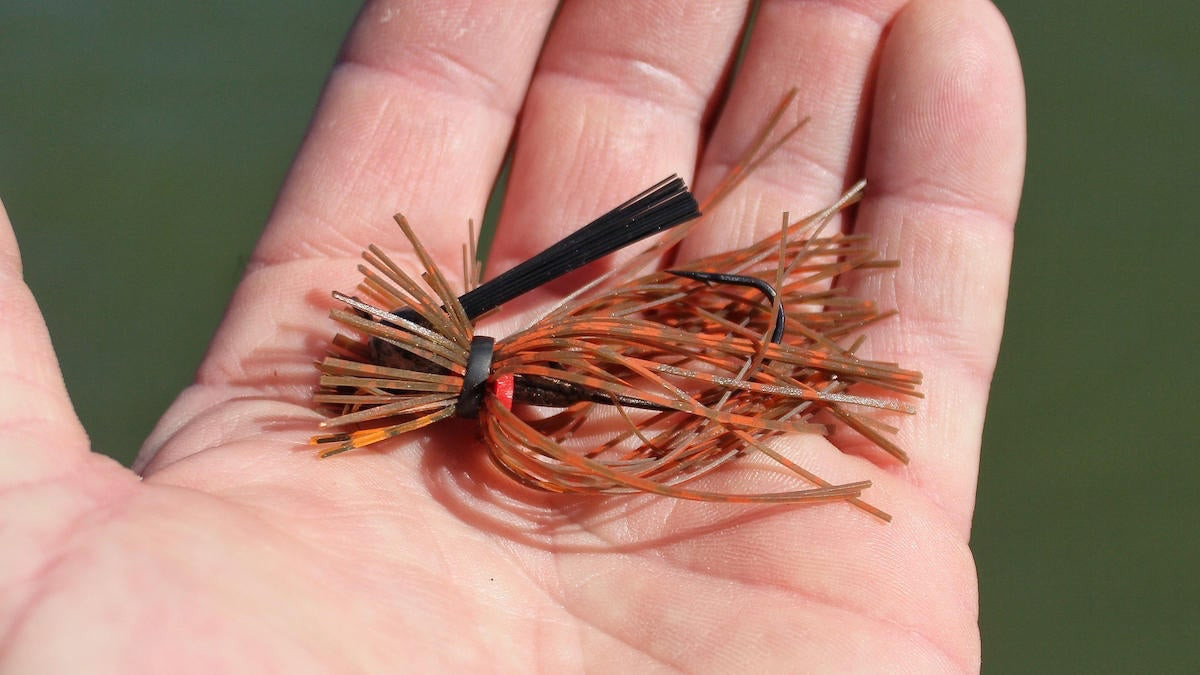
Downsized everything
The hook, weed guard and skirt have all been downsized in order to put the Jewel Baits Pro Spider Jig together. Again, the bass are keyed in on crawfish when this bait works so well but they are not in a super aggressive mode and often not really wanting to contend with big baits. Something realistic and less threatening like this little nugget is more likely to get sucked up.
Keeping your bait compact with a comparable trailer selection is important or else you’ll over power the jig and take away from its design and intended purpose. For the size trailers that should be used with this bait, it has a sufficient and well designed trailer keeper, which has also been downsized from what you see on a lot of bigger jigs. No need for a massive trailer keeper as it would just tear through the thin plastic of a smaller trailer.
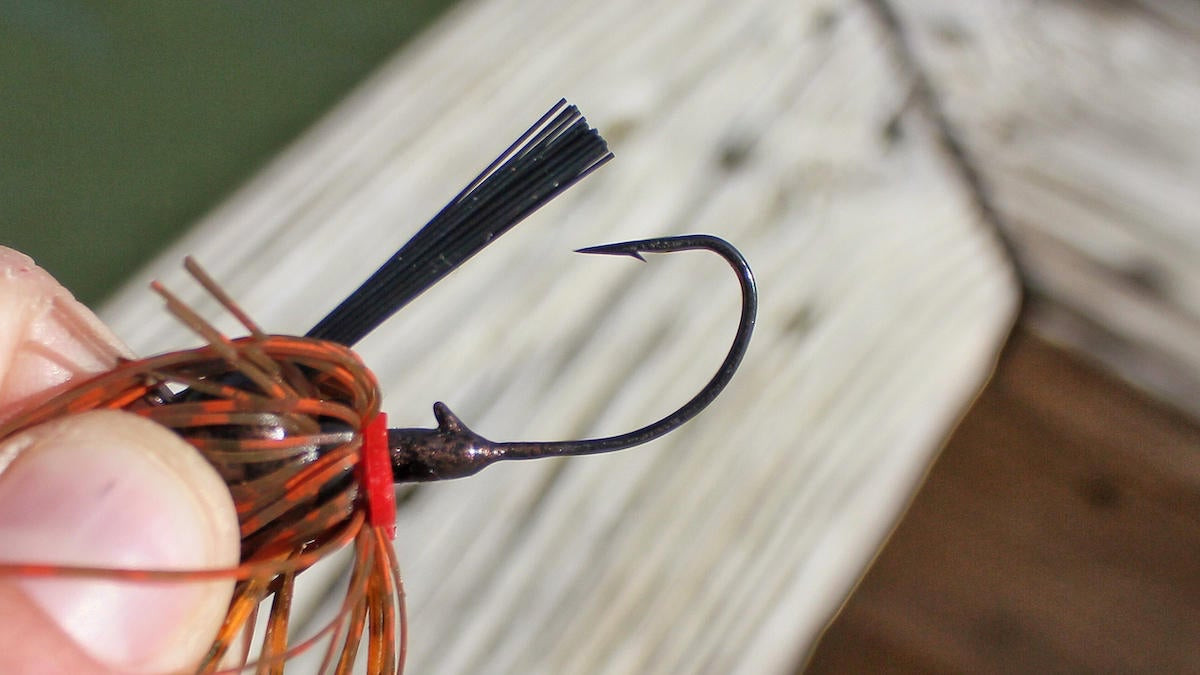
The hook
Taking a closer look at the hook, you’ll find perhaps my favorite thing about this jig. This is an ultra sticky, thin-wired hook with a nasty bend to it. From what I’ve read, it’s a custom-made Mustad Ultra Point Hook. It’s close to an O’Shaughnessy style bend and very effective at pinning fish with minimal effort on the hookset.
Which brings up something worth noting with this jig. You don’t want to jack them as hard with a finesse jig like you would with a big football jig. And you don’t want to use really big line either. Instead, move away from the 20-pound test fluoro and lean more towards 10- or 12-pound, maybe up to 15-pound if you’re fishing in some really gnarly cover. But the lighter line is strong enough and will actually help the action of the bait as it drifts around. The stiffer, bigger line will impede the action a bit and give you too much courage on the hookset, which will eventually open this light wire hook up. This is a bait built to catch big fish, but intended to do so with a little finesse.
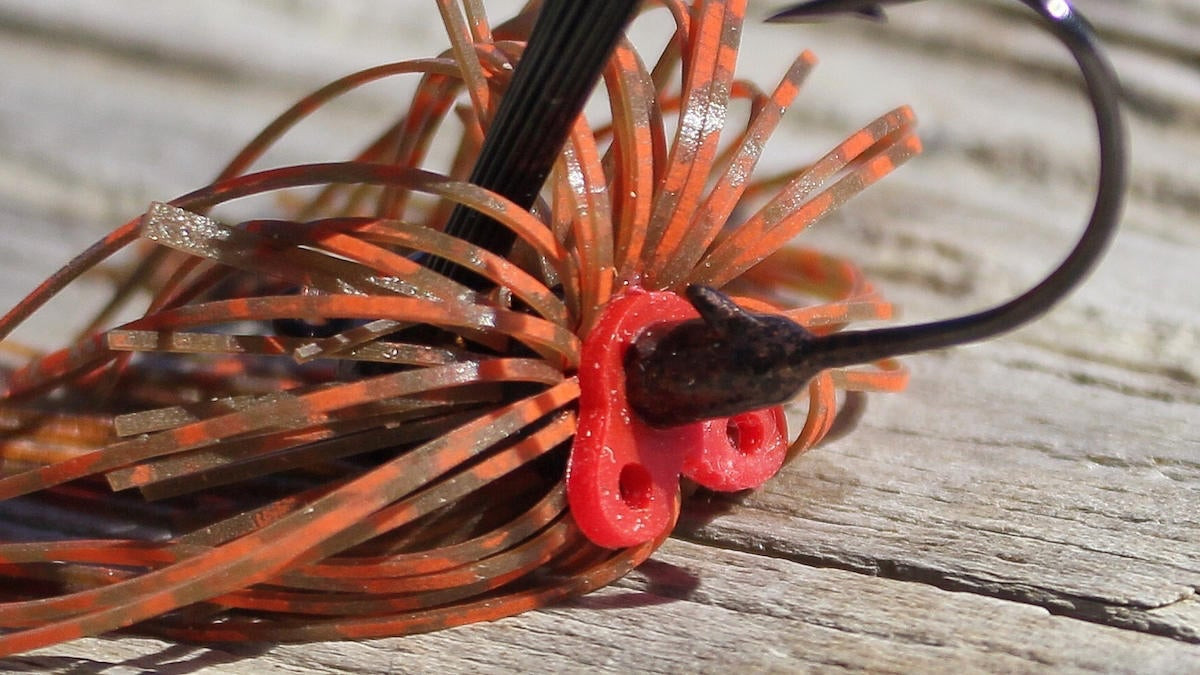
The skirt
The skirt is where the Spider part of this jig’s name comes from in reference to the jig material that is flared out around the head of the bait. Cutting essentially half the skirt off this way does two things, it makes the bait a great deal more compact and it also masks the head and imitates a crawfish’s tail really well.
In the water, the part of the skirt that has been removed would typically flare out and make the jig appear much larger, where the inside of the skirt on the other hand stays pinned up more against the hook shaft. So even though less than half of the skirt has been removed, the bait’s underwater profile is likely a third of what it would be with a full skirt.

The angle of the bait
As the bait is dragged along, its design lifts the hook up off the bottom. This is intentionally done with the orientation of the hook and the line tie in the mold. The bait was designed this way so that the trailer would also stick up as the bait is drug along and thus imitate the defensive posture of a retreating crawfish.
Another interesting design characteristic that contributes to this stance of the bait is the collar of the skirt. The collar has two little holes in it where you can add rattles if you wish. But what’s interesting is that their initial orientation towards the back of the bait serves as a bit of a kickstand for the jig and helps the jig stand up as it’s being drug along. But this collar can get twisted which will cause the bait to fall to one side, so pay attention to its orientation to make sure you’re making the best presentation possible.
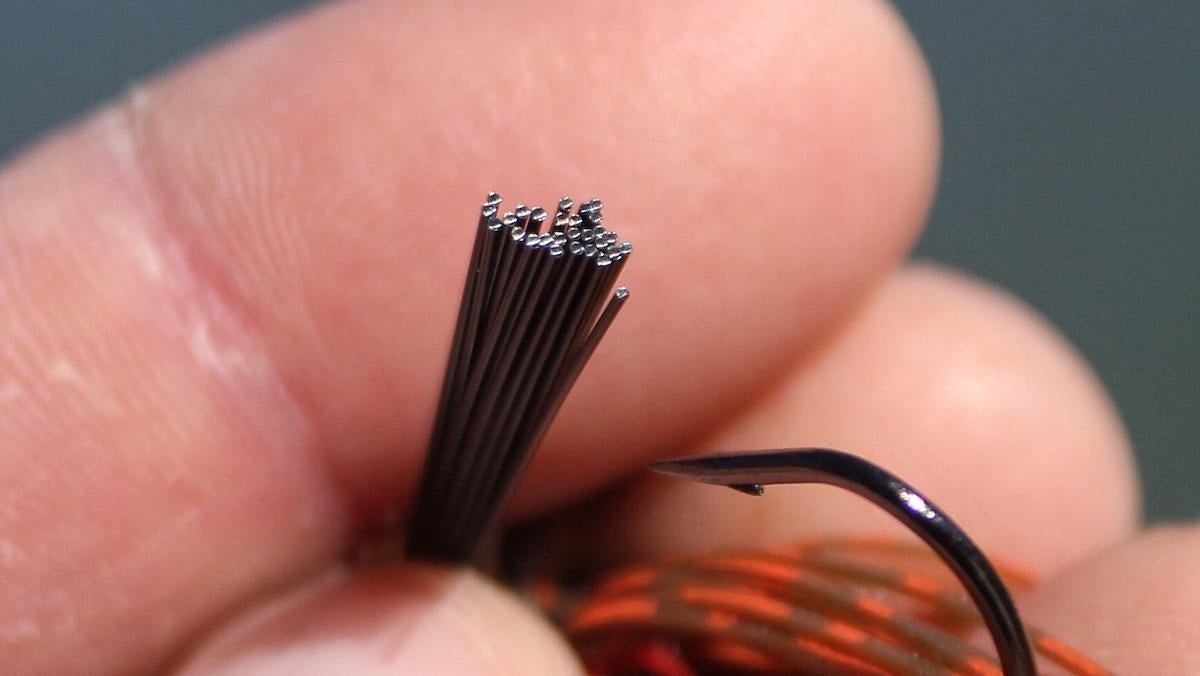
The weed guard
Again, like the rest of the bait the weed guard on the Pro Spider Finesse Jig has been downsized as well. Not only are there fewer strands comprising the weed guard than you’d see on a bigger football jig for instance, but each individual bristle is a little thinner in diameter as well. This makes the weed guard less noticeable when a finicky fish bites down on it and goes back to the discussion about lighter line and softer hookset. You won’t need to power your hook through a big tough weed guard.
In addition to adjusting your hookset though, you should also pay particular attention to the bait as you bring it through cover. This lighter weed guard means your hook point will find cover with less effort too. So as you start to feel pressure on your jig, you’ll want to very gently pull back to check it. As soon as you determine it’s cover and not a bite, try dropping your rod to dislodge the bait or ‘popping it’ undone. What you’ll find though, is that the need to work the bait this way will actually help you detect more bites, versus pulling back so hard on that initial tension that the fish feels you and just opens its mouth and spits the bait.
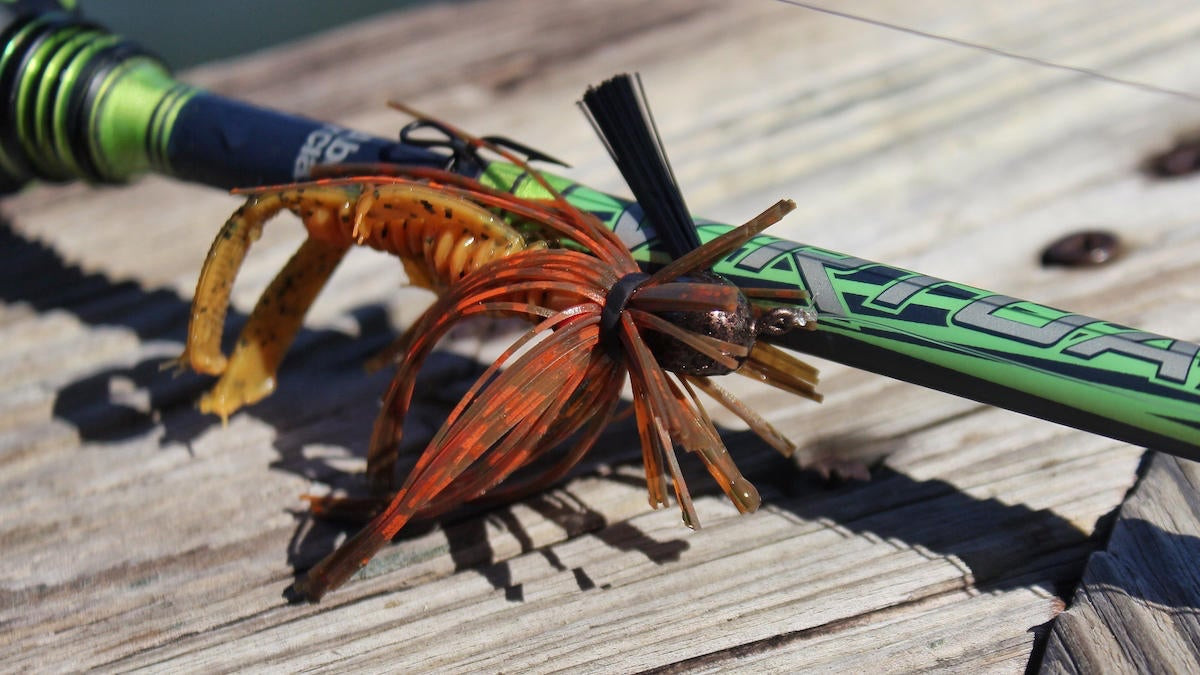
Final thoughts
The Jewel Pro Spider Finesse Jig is a really good one. I’ve used Jewel Jigs for years and though they make several quality baits, their specialty has always been in the finesse jig category in my opinion. Designing a jig that is less intimidating and confined to a small package, while still ensuring it packs enough of a punch to land the big ones is a bit tricky I’m sure.
From the bend of the hook down to its orientation and subtle trick the designers did with the skirt collar, this bait is built to be dragged through some nasty stuff, unlock the most unwilling jaw and bring that fish to the boat. Remember when downsizing baits, you have to downsize the gear. Back off the drag a little, take a step or two down on the rod size and lighten up on the line. Then just tie one of these bad boys on and go to work.












